Buckle up, for we have a bumper edition of The Agency Profit Podcast for you this week! Courtney Tarrant joins Marcel to divulge how The Ad Girls doubled profitability with a results-only compensation model.
About Courtney Tarrant
Courtney Tarrant is the COO & Owner of The Ad Girls, a female-focused Facebook & Instagram Advertising agency.
She has built a thriving business by catering to female-focused online entrepreneurs with a unique messaging-first methodology that has created over $40M in revenue for her clients.
Courtney’s focus on profits has created a boutique agency model with consistent 35% – 40% profit margins, a team she loves, and a list of clients she could’ve only dreamed of. In addition to working with clients, Courtney is passionate about sharing her agency transformation journey – from a business that ran her life, to a business that supports a life she now thoroughly enjoys.
Points of Interest…
- How Ad Girls are breaking the agency mold 2:32
- What is a ‘Results-Only Compensation Model’? 4:38
- How key performance indicators affect the model 8:30
- Trusting your employees – my soapbox moment 12:37
- Working backward from models to decipher compensation model 14:03
- Cost of delivery growing in lockstep with revenue 19:55
- Three prerequisites to the success of this model 23:28
- Spotting the optimum prospective employee 37:21
How The Ad Girls are breaking the agency mold
While all my guests on the Agency Profit Podcast are special, Courtney falls into the “very special guest” status. Why? Well, because I have A) met her in person; B) shared a stage with her on a panel in Toronto; and C) she has an unconventional way of thinking and making crazy margins in the process.
As we touched off in her bio, Ad Girls is a “female-focussed agency”, that work with female-led brands via Facebook, Instagram, and TikTok ads.
“Our specialty is creating messaging that really makes people stand out from the competition. And so we’ve been able to scale our agency to seven figures – for multiple years in a row now. We love helping our clients. We’re really excited about what we’re doing.”
For context; Courtney and her business partner, COO Jennifer Spivak, have been told (repeatedly) that how they run their agency “isn’t going to work.” Welp, the numbers dictate otherwise.
Not only that, they’ve created Ad Girls in such a way that it doesn’t rule their lives, yet they still command impressive profit margins. So, it won’t surprise you to learn that Courtney and Jennifer have since branched out into coaching other agency owners to “share the wealth” of their knowledge.
As for the thing that they’re doing that “will never work”? They are using a results-oriented compensation model. It’s not theoretically “new” in the realm of professional services, rather it’s more prevalent in other industries, such as accounting, consulting, and legal firms. Advertising agencies? Not so much. Hence the pushback.
What is a ‘Results-Only Compensation Model’?
OK, let’s cut to the chase; what is this results-oriented compensation model?
“The way I’ve structured the agency in general, and how I’ve always paid my team, is inside of a results-based model where the costs stay fixed. So, your costs stay fixed – you being the employee. I pay them a set amount per account. If you do that in two hours or seven hours, it is totally up to you. It’s based on the results that you create.”
Where did Courtney find out about it? What’s the backstory there?
“I got the idea, I guess originally, having both the blessing and the curse of never having a ‘traditional job’… This has, honestly, ruined me for the rest of my career on traditional jobs because the only thing that mattered was, ‘Are you effective at your job? Are you creating the results that we hired you to create?'”
Naturally, when starting her own agency, Courtney worked really hard to ensure her agency was structured in a similar way; where people could have a work-life balance. Ultimately, it starts with the terms of a contract, outlining the results required, day-to-day activities, and a reasonable timeframe for both.
“From there, I started scaling throughout my scaling process. Everybody told me I needed to start paying people hourly, that I needed to change my retainer model, and that I needed to do all of these different things. I did all of them, and none of them ever worked for me in the way that this did.”
For those currently reading with their head slightly tilted to one side, basically channeling a heck load of “HUH?”, let’s dig into the detail, shall we? Can Courtney give us an example of how this compensation model works at her agency? Luckily for us, she can!
“When we bring on an account manager, we bring them on in this really specific way… We offer them $1,000 per account that they manage. We have basically two levels – level one and level two, part-time and a full-time account manager. Our part-time people manage three-to-four accounts, and our full-time people manage six-to-seven accounts. So it gets to scale up with them as they want.”
This structure, of $1,000 per account, is for the contracted time of the account. So, if the client starts on the 15th to the 15th, the client pays The Ad Girls from the 15th to the 15th. The client pays them before work is done, and Courtney pays her team after the work is done – and they get paid for the calendar days that they work.
How key performance indicators affect the model
As ever, the devil is in the detail. Therefore, a ranking system is also employed to get an accurate view of an account manager’s overall performance via objective key results that Courtney has developed.
These key performance indicators are related to the position. So, employees aren’t ranked on the number of hours worked, but rather their retention rate month-on-month alongside the results from client surveys.
“Based on the results from those things, indicates whether or not they get to move up from part-time into full-time. So they have to be efficient and effective at their job in order to move up, and we continue to pay them in that structure.”
In the event they want to go full-time, then they get a $6,500 base retainer, which would be six to seven accounts. Luckily Courtney and her team are never short on clients, so they’re able to keep their full-timers quite busy.
So, to recap, Courtney pays her employees a flat rate per client. There’s also a retention bonus for account managers who have been working with Ad Girls for six months. All of these things are built on loyalty and radical responsibility. Again, it’s about clear communication throughout the company.
“What are you providing to us as a business? And what can we provide to you in return. So, if you’re gonna stay with our company past the initial six months, we will give you $150 per client, per month, that you retain that client, past their initial contract.”
For some of Courtney’s people boasting great retention rates, that translates to an additional $1,200 a month on top of their base pay. Details on how this retention bonus doesn’t affect the agency’s profitability from 11:16 minutes***
Trusting your employees – my soapbox moment
I think this results-oriented model is nothing short of beautiful. After all, it’s the purest form of what we believe in; all that really matters is that you have a strong delivery margin. And that you manage your overhead well.
What Courtney has essentially done is place a firewall in the business. She’s pushed the onus of responsibility toward her team. No matter what, her profit and loss statement will look good because she’s fixing that cost basis at the client level. Now, it’s up to her team to figure out how to be efficient, consistent, and drive the results.
Why is this a good thing? Well, for starters, you generally don’t have to worry about time tracking or utilization rates. You know, all of the operational stuff that… we help clients… do. But, frankly, that’s all a pain in the ass anyway. Nobody really wants to do it, if we’re being honest.
That said, it’s really important to keep on top of these things if you’re NOT running this results-only model. Because, otherwise, you don’t really actually know what it’s costing you to do the work. So, it’s this oxymoron; it seems so simple it almost feels like it can’t work. And, frankly, with average employees that might be true. More on that below.
Working backward from margins to decipher compensation models
There’s not just an account manager working within this model solo. Sometimes, other people are involved in servicing Courtney’s clients. So, how did she decipher what she could afford to pay each person that has to work in a client team? How did she work backward from her margins to arrive at these compensation models?
“At one point in my life, I read Profit First, which I think every business owner at some point has read. I was looking at how much do I really wanna make from my business? I was making $10,000 a month as a freelancer, so, what do I want to bring home and how much can I afford to outsource? So, I know – for client delivery – can afford 35% of my total costs. That includes my account managers, my graphic designers, my copywriters, and anybody that I need to execute on ads.”
So she uses 35% of whatever the client pays her in order to do that. Then, Courtney earmarks an additional 10 to 15%. That number has changed as she’s grown. These “operations expenses” include her admin team, her leadership and support team – anybody else that makes the business run.
“We have an incredible system. Systems is my love language. It’s why I started my business partnership in the first place. Because I just want to be in the Ops cave – creating systems and optimizing stuff… Our operations team is really slim because we’re so efficient, so I have that extra 15% earmarked for that.”
From there, you then tackle profitability. Given 35 and 15 is only 50%, Courtney sometimes has an extra 10% that sometimes bleeds over, which positions her anywhere between 35 to 40% profit margins on any typical month. ***For further costing breakdowns, tune in from 16:11 minutes***
Cost of delivery growing in lockstep with revenue
As “simple” as this is, that doesn’t mean that it’s easy. There are some things that you must make sure are in place for this to not end up a train wreck. One of the challenges with growing a service business (especially an agency when you’re running a traditional compensation model) is that – usually – you’re gonna make the most money when it’s just you and a few other people. You’re doing in the region of $400k in revenue and most of that’s going into your pocket.
Then things are gonna get worse, before they get better, from three to 12 a lot of the time. Your growth has this parabolic shape, which I call a “growth trench.” The only way out of it is to go through it. For a while, you have to make these hires, which are relative to the size of your team. They’re a really big additional set of capacity and it takes time to fill.
Meanwhile, you’re subsidizing that extra capacity you’re paying for, but you’re generally not growing fast enough to capitalize on it. However, the way Courtney structures her compensation model; her payroll, or her cost of delivery, grows in lockstep with her revenue.
For context, Courtney’s almost never carrying additional capacity that she’s not paying for. This helps her to maintain a consistent level of profitability through those stages of growth, which – let’s face it – is pretty cool. Who can’t identify with the phrase…
“The business grew, but I’m making less money than I was last year – and it’s a lot more stressful. Sh*t, was it worth it? Am I ever gonna get out of this?!”
Yeah, you can. This – unfortunately – is the crappy byproduct of this industry. You just have to endure a few years of this before things get better. Do such trenches occur if the Results-Only Compensation Model’ is applied?
“In my experiences, our trenches are not as deep. When I’m talking about taking on additional expenses that maybe aren’t in step with where we’re at right now, I’m talking about hiring leadership so that I can open up additional time. Like, support staff for my team that gets me – Courtney – out of delivery… The upside is so high for me, in terms of my time, but additionally I can make back up that profitability so fast.”
***Courtney delves further into this from 22:38***
Interested in seeing what your profitability looks like based on varying levels of comp for your team? The Agency Profit Toolkit includes a free template for you to model this out, and see how your agency looks based on the numbers.

Grab your copy for free below:
The 3 prerequisites for the success of this model
I think we need to go deep on a few prerequisites to this model being successful. For instance…
1. The time investment requirement Presumably, Courtney spent time figuring out how long it would take her to undertake certain tasks, making sure that those were reasonable before she implemented the model? Or did she apply the constraint and then challenge her team to figure out how to make it sustainable? Or was it a bit of both?
“It was both. As with as with all things, this has been entirely trial and error. I’ve had so many people throughout my career tell me, ‘This is not how you do it, this is not what you should be doing’. And that just never worked for me. When I originally came up with the model, and I was looking at my 35% margins, I had to increase my pricing.”
The second thing Courtney knew she had to do was review the contract length. The Ad Girls have the ability to create very accurate predictions on their timelines. Such is the nature of their business – as a Facebook, Instagram, and TikTok ads agency, it’s limited. They know what their services are and – conversely – what they are not. This clarity limits the dreaded scope creep. ***For information on managing ad spend, tune in from 25:30***
Where I’ve seen this type of thing go poorly is when an agency is just taking no responsibility for scoping work, for protecting scope, for defining scope, and they’re basically just pawning their poor management of the agency off on the team. The team is paying for it with their evenings and weekends and it just creates this extremely toxic burnout culture.
Thankfully, for her team, Courtney has her sh*t together as it relates to scope. She defines it – ensuring clarity, that the team is supported, while finding efficient ways to do things. This also works in terms of abstracted time materials ***More insight on this from 29:16***
2. The "Founder Mindset" In short, you need to be okay with the idea that a really successful team member in your company might be someone that gets paid nine grand a month to work 20 hours a week – and chill. If they're getting the results and you are profitable, that's the best possible outcome.
There are some people that have a hard time accepting that sort of reality as a good outcome, purely because they feel entitled to the 40 hours a week. ***I ask Courtney about her experience here from the 30-minute mark; here’s a taster quote***
“I am not interested in saying you have to sit in a seat from 8:00 AM to 5:00 PM in order to prove your value to me. Maybe you do your best work at night, maybe you’re more efficient than other people – let me reward you for that!”
3. Third and final prerequesite for results-only model success? Identifying who thrives in this environment. And, in Courtney's experience, it's pretty damn evident who will naturally fly in this set up.
“Entrepreneurial people thrive in this environment. So, “punch the clock” employees do not. I don’t know how else to describe it or explain it. This might also be a polarizing statement, and I apologize in advance, but we have a hard time hiring from other agencies. If we are hiring a full-time person at an agency to come on, we have about a 30% success rate versus if we go with people that have been freelancing for a few years, or people that have had their own agency.”
For the record, if Courtney hires someone from an agency and they onboard their existing clients, they will get an appropriate referral bonus.
Spotting the optimum prospective employee
Prospective employees of this model must be driven by a deeper commitment to work. They need to have an innate comprehension that the work surpasses digital ads, media buying, or creating great messaging – it’s about changing workplace mindsets.
“What we’re doing brings the opportunity and the ability to impact lives, to change the lives of our clients, to change the lives of ourselves. We have a huge opportunity, and I think that’s so cool about what we do. We have a huge opportunity to create massive shifts in people’s worlds.”
As for how the filters Courtney applies to find these intrepid employees? She has spent so much time on the hiring process that here is the abridged version of how this pivotal process unfolds…
“We start with the LinkedIn job posting. We then request a video response to our top 10% of candidates. And it’s shocking how many people will not take the time to do a video response. If you’re not dedicated enough to record me a five minute video, then like I don’t want you on my team.”
In terms of the questions prospective employees are asked to provide, it largely boils down to the level of budget they’ve handled. Successful candidates will then have an interview with Courtney. Depending on how that goes, they either get a secondary interview with founder Jennifer or they get put into a two-week paid training program. ***More on that from 40:23 minutes***
Key takeaway…
The reason this model works for Courtney is because the incentives are tensioned. In this model, if somebody decided to slack off and under-service clients, they would lose clients, they would not make money. Conversely, if they decided to over-service clients, well, they’re the ones that are paying for that. So this tension naturally leads to an optimal outcome – so long as somebody has a moral compass and is able to take accountability.
Moreover, everything is so super systematized that any responsibility is given to the employees. The number one core value at Ad Girls goes a little something like this…
“It’s radical responsibility and radical transparency. You are radically responsible for the results that you create, but you’re also radically responsible for communicating. If at any reason, for any time, you cannot create those results, then we will call in reinforcements for you… Our mission, actually, as an agency is to put more money in the hands of more women. That includes us, that includes our team, and that includes our clients. That’s everybody. Right?”
See more from Courtney…
- The Ad Girls
- CourtneyTarrant.com
- Courtney’s Instagram
- Courtney’s LinkedIn
- Million Dollar Agency Mentorship
Did you learn anything new from this episode? Let us know in the comments below! We have helpful blogs designed to bolster your agency profitability, such as How To Calculate Your Billable Employee Cost-Per-Hour.
Our next installment of #APP, on August 9th, will see Marcel talk with Ilia Markov for our 119th edition. Our previous blog – Episode 117 with Darian Kovacs – can be viewed here…
Avid #APP Listener?!
We would be eternally grateful if you could leave us a review…
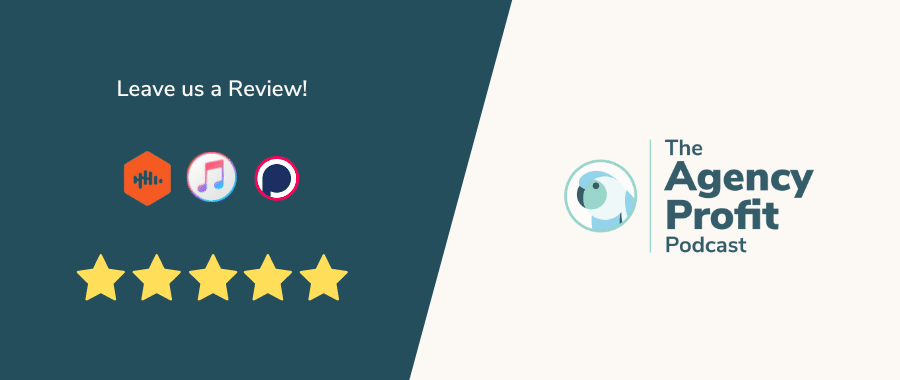
Agency Profitability Tool Kit
If you’re looking for more resources to help you improve your agency’s profitability, check out the Agency Profitability Tool Kit. It’s full of templates and checklists used when consulting clients. This helps them improve profitability by over 100% in under 60 days.
Fill out the form below for your copy!

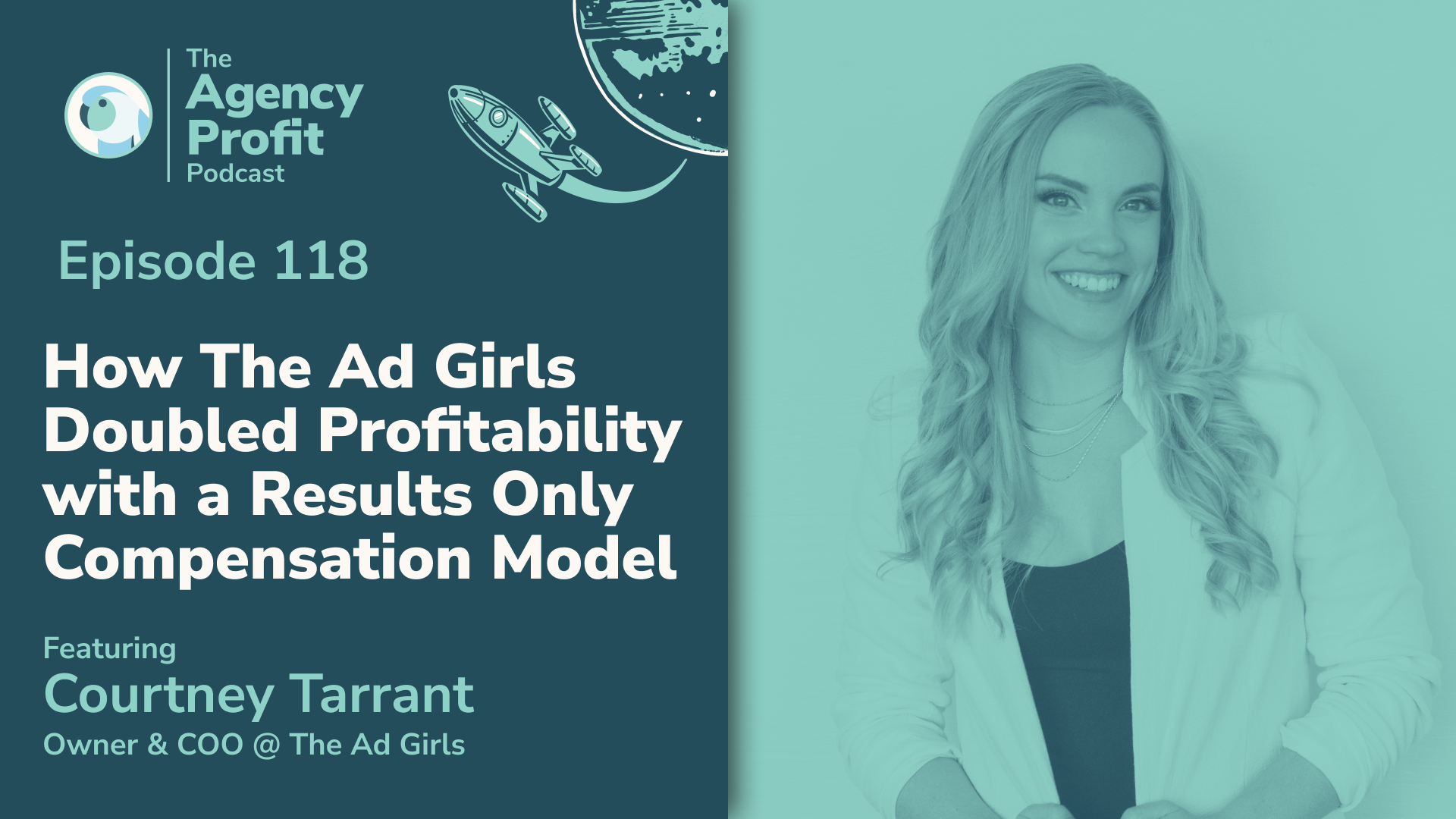
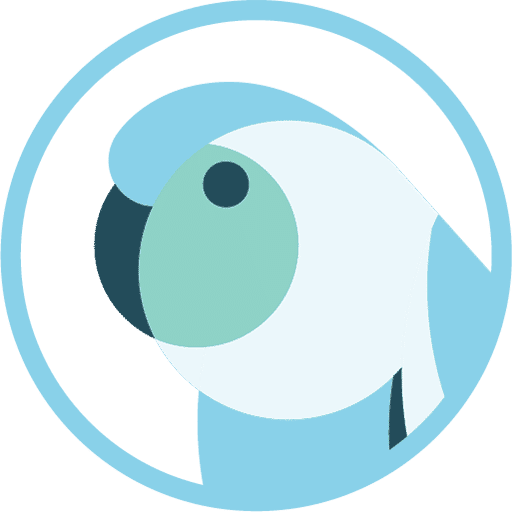

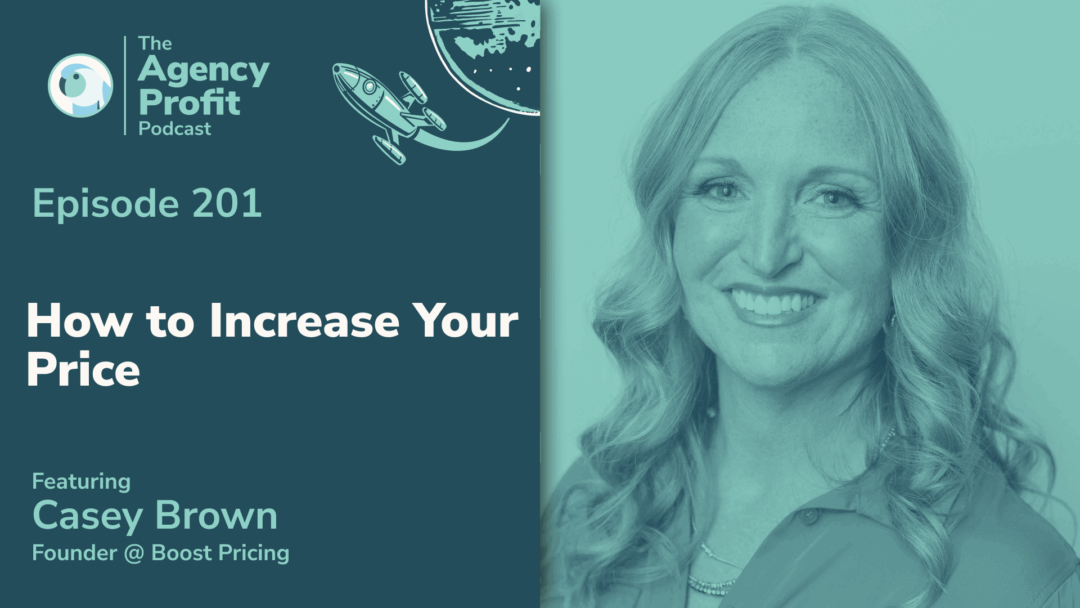
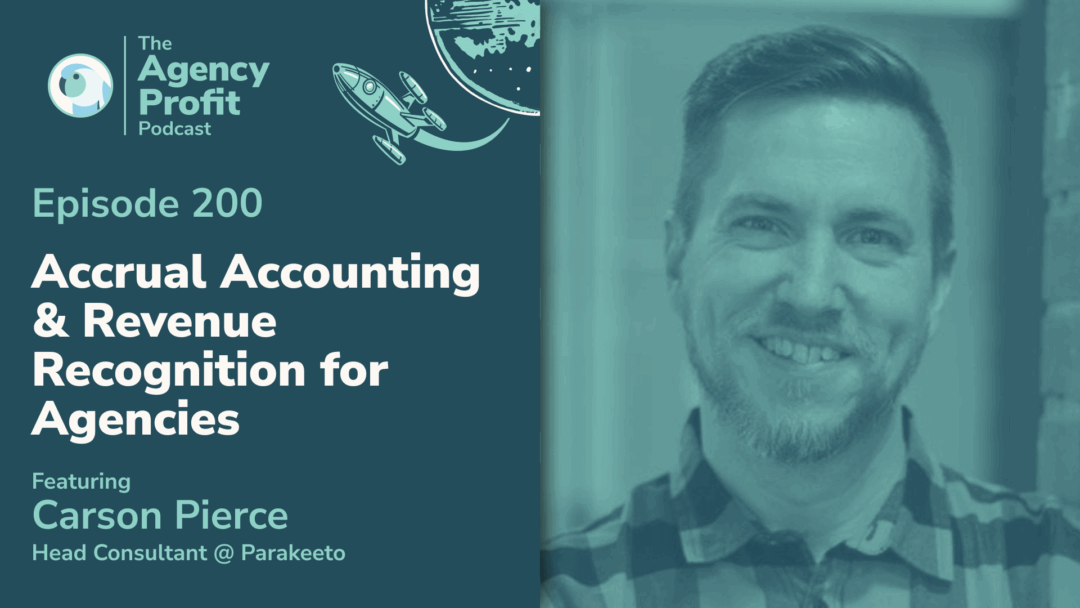


0 Comments